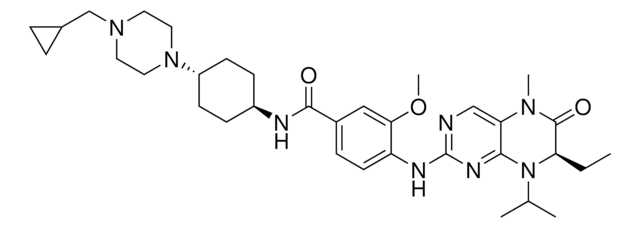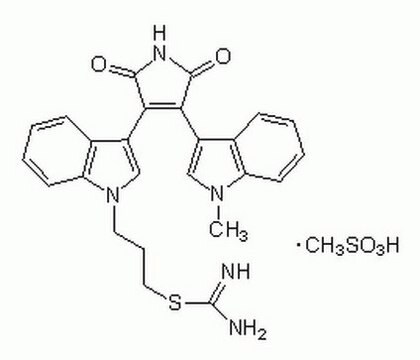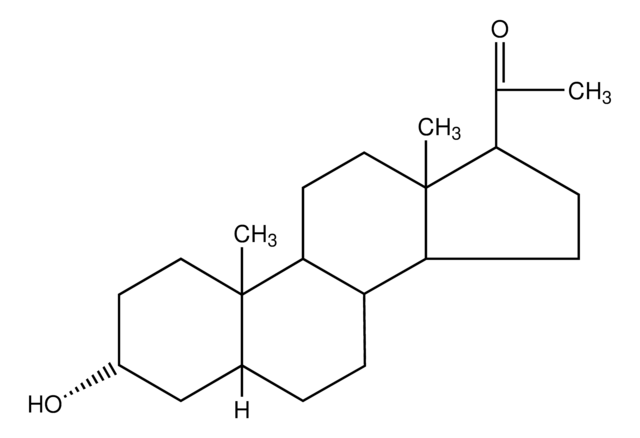G2171
GW843682X
≥98% (HPLC), solid
Synonym(s):
5-(5,6-Dimethoxy-1H-benzimidazol-1-yl)-3-{[2-(trifluoromethyl)-benzyl]oxy}thiophene-2-carboxamide, GW843682
About This Item
Recommended Products
Assay
≥98% (HPLC)
form
solid
color
off-white
solubility
DMSO: >10 mg/mL
originator
GlaxoSmithKline
storage temp.
2-8°C
SMILES string
COc1cc2ncn(-c3cc(OCc4ccccc4C(F)(F)F)c(s3)C(N)=O)c2cc1OC
InChI
1S/C22H18F3N3O4S/c1-30-16-7-14-15(8-17(16)31-2)28(11-27-14)19-9-18(20(33-19)21(26)29)32-10-12-5-3-4-6-13(12)22(23,24)25/h3-9,11H,10H2,1-2H3,(H2,26,29)
InChI key
JSKUWFIZUALZLX-UHFFFAOYSA-N
Application
- to study the influence of PLK1 inhibition on Wee1 (G2 check point kinase), cyclin-dependent protein kinase 1 (Cdc2)–Yp15, expression in melanoma cells
- to determine if PLK1 inhibition decreased the survival of hamartin and tuberin deficient cells
- to investigate if inhibitors of PLK1 and aurora kinases have a synergistic antimitotic impact in HeLa cells
Biochem/physiol Actions
Features and Benefits
Storage Class Code
11 - Combustible Solids
WGK
WGK 3
Personal Protective Equipment
Certificates of Analysis (COA)
Search for Certificates of Analysis (COA) by entering the products Lot/Batch Number. Lot and Batch Numbers can be found on a product’s label following the words ‘Lot’ or ‘Batch’.
Already Own This Product?
Find documentation for the products that you have recently purchased in the Document Library.
Our team of scientists has experience in all areas of research including Life Science, Material Science, Chemical Synthesis, Chromatography, Analytical and many others.
Contact Technical Service








